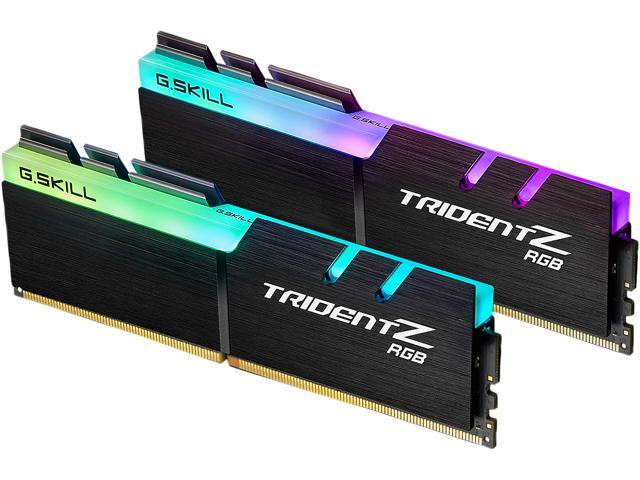I don't think it's Samsung B because Samsung B is lower density IC, and 16GB modules/double-sided are max. I also don't think it's Micron B (but possible), as G.Skill wasn't using Micron B in these kits. It's more likely Hynix, but in this capacity, Hynix is the best for OC/performance.
I re-checked. You are correct... It isn't a b die. I used the b-die finder site, I saw the part number I thought was this one (f4-4000c18q2-64gtzr), but my kit is not "q2", but "d". The other kit was 8*8gb so I couldn't use it anyway. I misread that type before.
I am running the latest bios. And 1.4V vdimm (as per xmp/docp).
The best results are on Ryzen APU 4000/5000. On the best setup, I couldn't stabilize 128GB above 4200. The same with Hynix and Micron. 2x32GB could go up to 4600... but also only on Ryzen 5000 APU as the regular one gave up at 4133 or something near.
Ryzen 5000 (non-APU) has a worse memory controller. Also, your motherboard is not the best for RAM OC. I'm not saying it's not possible, but it may take you some time and manual tweaking to stabilize 32GB modules at a higher clock. I would start from 3600-3733, and once you stabilize it, then try one higher ratio and test again.
As EarthDog mentioned, you can check higher SOC voltage manually, as somewhere around 4000, the motherboard will probably limit SoC voltage. Also, check higher VDIMM.
What kind of stability test would you suggest to use for memory testing on my Ryzen 9 5950x? Prime95 blend? On all cores? I find blend causes windows to just swap constantly... (I'd rather not stress test my nvme at this time) so I use custom setting for the amount of ram that leaves 8gb free and 2 free cores.
I've started it like this an hour and a half or so ago (no pbo2, no curve optimizer) at "auto" fclk that means 1800mhz on my bios and ram at 4000mhz.
Is this a good way to test ram stability at these particular settings or is there better software? Eventually I'd like to try up the fclk to 2000mhz (yes, I know how unlikely this is to work, but who knows, maybe I won the silicon lottery?)
Edit: Would it be better to use something like core cycler to test individual cores letting them boost a lot higher rather than a multicore workload that barely touches 3ghz(with no oc).
Then, upping the SOC voltage was mentioned. After watching some videos about self immolating ryzen cpus (although newer gen). Do you think it is a requirement to measure the actual so voltage delivered by the MB before messing with it? I have a good voltmeter. I just need to find out where are the test points to do it.
Because of IMC/IF ratios, it's still recommended to keep it at 1:1 and tighten memory timings for the lowest latency. To match 3600 1:1, you need at least 4800 1:2 ... and it's impossible with 32GB modules. With 16GB modules, it was possible only on Micron B, but it's a higher density IC with limited timings tweaking options, and to match 3600 1:1, it requires about 5000 1:2. It's good only for 4000/5000 APUs.
I guess the most likely scenario I would be happy with is to run it at 3600mhz cl16. But I'll still try squeezing more out of it first.
While the QVL list isn't The Gospel, it's more than just suggestions. It tells you what was tested to work on that board. If it's not on the list, it means it didn't work (or wasn't tested).
I'm hoping it's the latter. If not I can return these kits for free, but then what else can I get at this capacity? Probably nothing...
Right. The increased capacity puts more stress on the IMC, which lowers the ceiling. The higher the capacity, the lower the speed it will support. If you're looking for 128GB, you'll likely require even slower speeds with the increased capacity.
If that is the case I'll have to make some decisions after seeing some benchmarks. I don't know yet what real world performance hit will I have running it at slower speeds.
I wonder, what is the mechanism of bigger modules being more difficult to get to work at higher clocks for the MB. (assuming the manufacturer is right the module is good for let's say 4000mhz, what difference does it make for the MB if it addresses more RAM on the same number of modules or less?)
Electronics is one of my hobbies. I'm very interested in hearing it, if anyone has a technical explanation why this happens.
